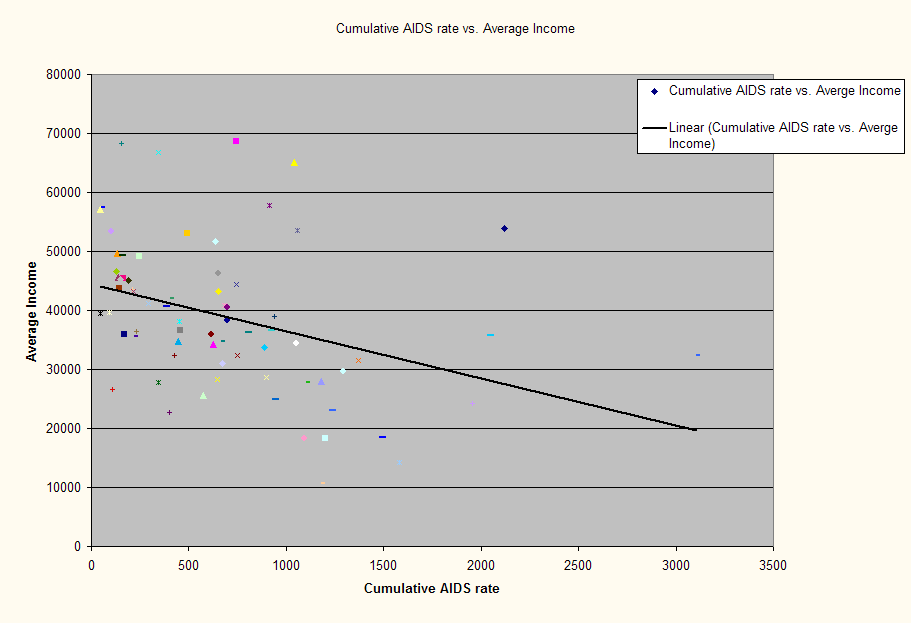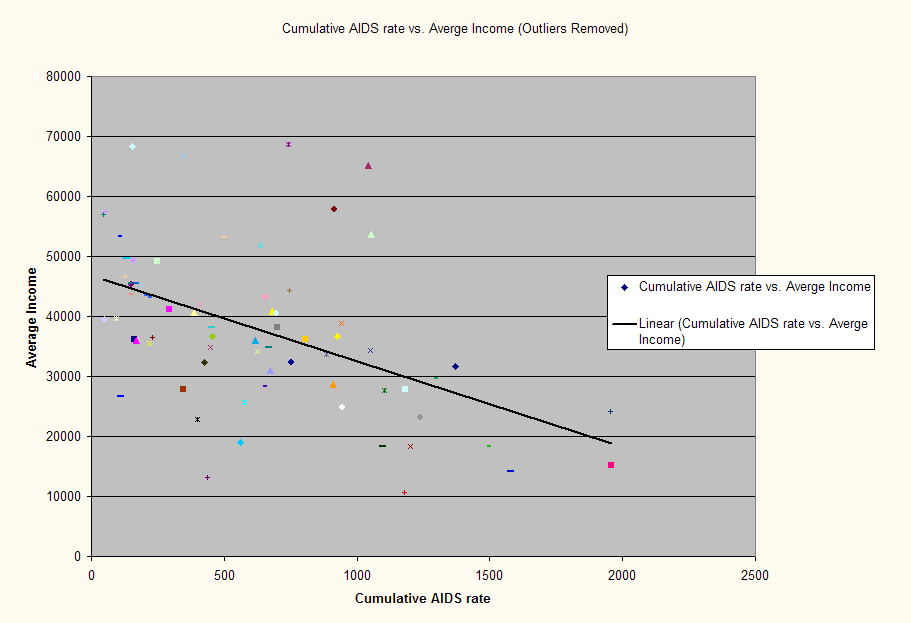INTRO: AIDS CORRELATION IN CHICAGO
POVERTY
According to the 2007 Report on Illinois Poverty (10), Chicago’s individual poverty threshold is $ 10,210. The correlation between the percent of individuals below poverty level and the cumulative AIDS rates in Chicago is 0.5019 (GRAPH 1). Five of seven wards with the highest percent of individuals who have the cumulative AIDS rates (TABLE 1) and are poor are in fact neighboring wards on the South Side of Chicago: Oakland (52.5), Washington Park (51.6), Grand Boulevard (46.9), Englewood (43.8) and Douglas (41.2). Conversely, Edison, Forest Glen, Norwood Park and Jefferson Park are among six wards with the lowest AIDS rates and lowest poverty levels (TABLE 1). Predictably, these four wards are adjacent to each other and are furthest north from the center of Chicago.
AVERAGE INCOME

Similarly, the correlation between the average individual income and the cumulative AIDS rate is -0.3672 (TABLE 5), which is statistically significant. Cumulative AIDS cases increase as the average income for each individual decreases. Lakeview remains a significant outlier because in comparison to towns with a similar Cumulative AIDS rate, its average income of $53381 is significantly high for a rate of 2117 (GRAPH 2 A, MAP C, TABLE 5/TABLE 2). As a ward adjacent to a predominately white, gay neighborhood on the North side, this population probably does not struggle with the same economic problems as the South side. The high cumulative AIDS rate is most likely explained by the gay community rather than poverty.

When the three outliers, Uptown, Edgewater and Lakeview, are removed, the negative correlation between cumulative AIDS rate and average income is strengthened, jumping from -0.3672 to -0.4965 (Table 5/Table 6). Lower income is associated with lower cumulative AIDS rates.
Reviewing cumulative AIDS rates with average income and poverty levels, the correlations are inversely related. The five adjacent wards on the South Side are defined by deep and extreme poverty, with at least forty percent of the population living below poverty levels (MAP B, TABLE 1). Not surprisingly, a majority of public housing units were formerly located in two of the five wards; Grand Boulevard shouldered the Robert Taylor Homes, the largest public housing project in the United States, while Douglas housed the Darrow Homes and Stateway Gardens (11). The families who have been forced to vacate these projects have not escaped the poverty stricken public housing units (12). They remain burdened by the economic and social deprivation of these public housing units, are connected with the AIDS epidemic in Chicago.